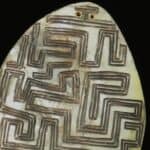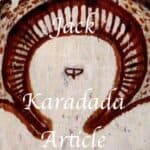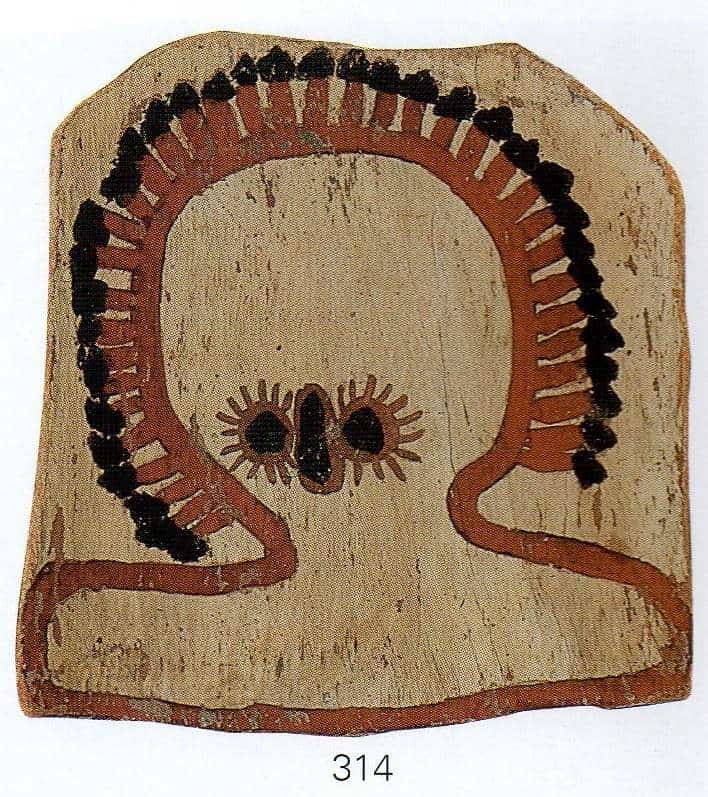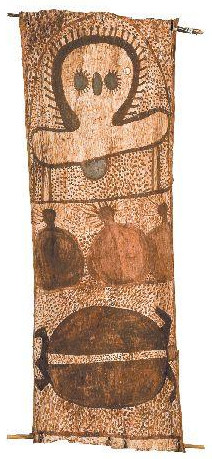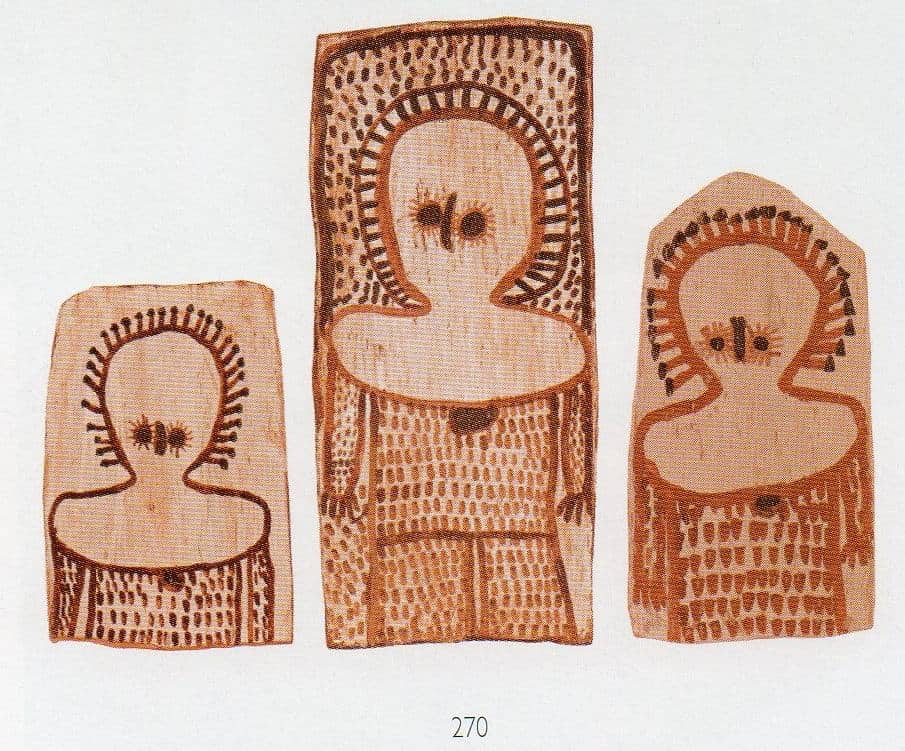Ignatia Djanghara Wandjina Paintings
Ignatia Djanghara is an Aboriginal Artist who painted depictions of Wandjina. She painted in the Kimberley of Western Australia in the 1980s. Most of her Wandjina paintings are on
The aim of this article is to assist readers in identifying if their bark painting is by Ignatia Djanghara. It compares examples of her work. She painted in a Wandjina Style.
If you have an Ignatia Djanghara bark painting to sell please contact me. If you want to know what your Ignatia Djanghara painting is worth to me please feel free to send me a Jpeg. I would love to see it.


Ignatia Djanghara Style
Ignatia Djanghara paints Wandjina with round eyes. The eyes are smaller and the eyelashes are thick compared to Charlie Numbelmoore.
The face of her Wandjina is white while the body below the armpits covered in dots that represent the rain. Her paintings, in general, are similar but finer than those of Lily Karadada. Her paintings are almost identical to her husbands Waigin Jangarra. Ignatia paintings are often of only Wandjina but sometimes also incorporate totemic animals or stick figures. Her major Totemic animals are the turtle and snake.
Many of Ignatia’s depictions of Wandjina are small and show only waist up. Wandjina paintings showing the whole body are a lot less common. Bigger barks depicting the whole Wandjina are more desirable than those of head and shoulders.
Ignatia’s images of Wandjinas on bark are typically icon-like in shape. They have rounded sides, narrower at the top than the base. The spirits are often depicted with bark buckets, an artifact unique to the Kimberley region
Ignatia Djanghara has also painted on traditional spathe containers.
Bibliography of Ignatia Djanghara
Ignatia Djanghara started painting regularly in 1985. She painted at Warringarri Aboriginal Arts center in Kununurra. Ignatia and her husband Waigan often worked together as did Rosie and Louis Karedada and Lily Karadada and Jack Karedada. They gathered their ochres from the local creek beds and like their counterparts in Arnhem Land used charcoal to create black paint.
Little information is available about Ignatia’s childhood and youth. She first became prominent at Kalumburu in the mid-1980’s. She lived next to the Benedictine mission that was 25 kilometers from the northern coast.
Ignatia, who was born around 1930, was already in her mid 50’s when she first began creating Wandjina bark paintings. Her husband Waigin is probably the person who taught her to paint. He was responsible for maintaining Wandjina on cave walls.
Though it is not known when Ignatia and Waigan passed away these two wonderful old Woonambool elders left a priceless legacy. Wandjina images are amongst the most powerful of all Aboriginal art.
If anyone knows more information about the biography of Ignatia, please contact me as I would like to add it to this article.
Djanghara is sometimes spelled Ignatia Jangarra

More Kimberley
Artworks and Articles
All images in this article are for educational purposes only.
This site may contain copyrighted material the use of which was not specified by the copyright owner.
Ignatia Djanghara Bark painting images
The following images are not a complete list of works by Ignatia Djanghara. They do however give a good feel for the very distinctive style of this artist.

